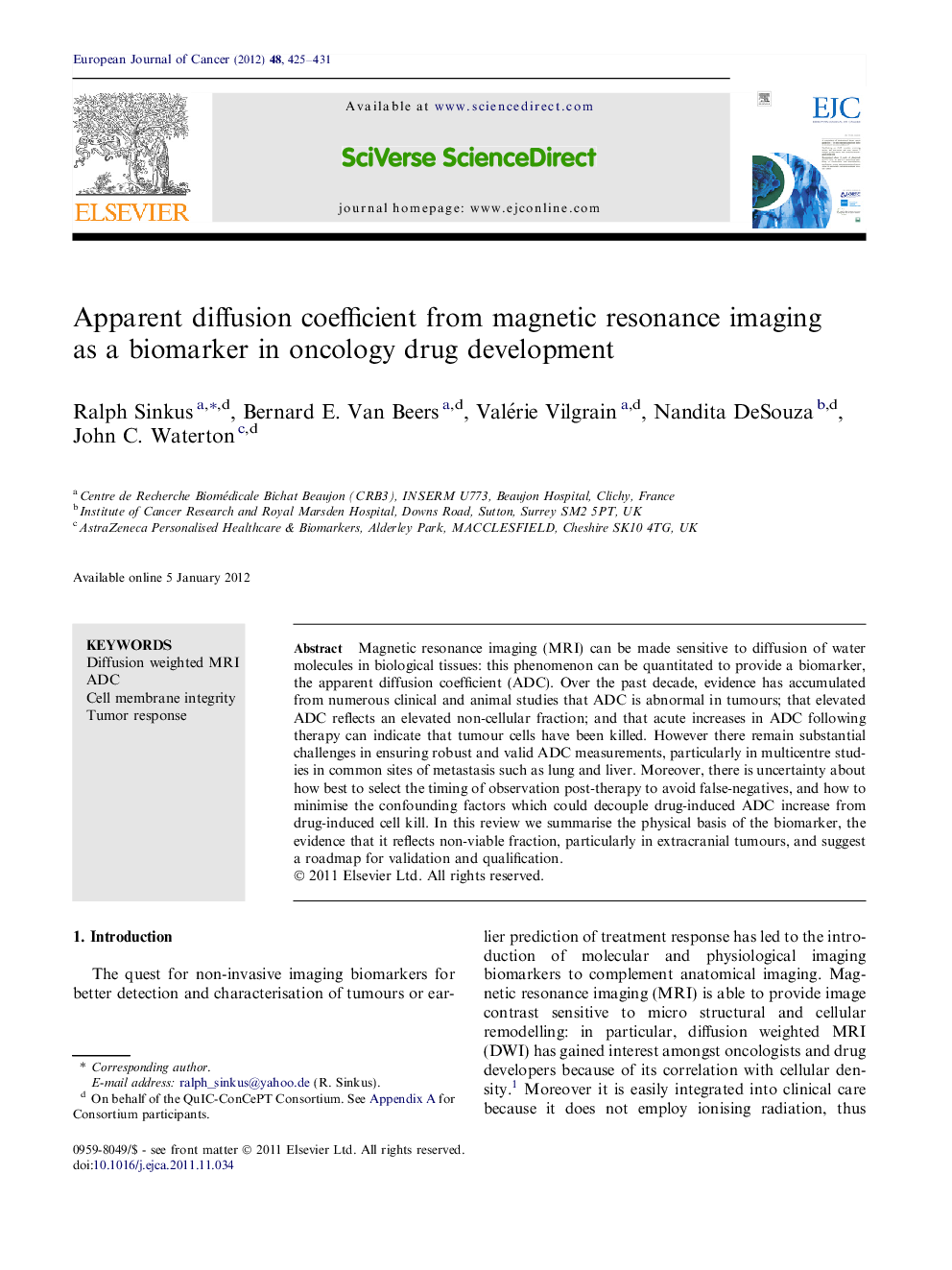| Article ID | Journal | Published Year | Pages | File Type |
|---|---|---|---|---|
| 2122228 | European Journal of Cancer | 2012 | 7 Pages |
Magnetic resonance imaging (MRI) can be made sensitive to diffusion of water molecules in biological tissues: this phenomenon can be quantitated to provide a biomarker, the apparent diffusion coefficient (ADC). Over the past decade, evidence has accumulated from numerous clinical and animal studies that ADC is abnormal in tumours; that elevated ADC reflects an elevated non-cellular fraction; and that acute increases in ADC following therapy can indicate that tumour cells have been killed. However there remain substantial challenges in ensuring robust and valid ADC measurements, particularly in multicentre studies in common sites of metastasis such as lung and liver. Moreover, there is uncertainty about how best to select the timing of observation post-therapy to avoid false-negatives, and how to minimise the confounding factors which could decouple drug-induced ADC increase from drug-induced cell kill. In this review we summarise the physical basis of the biomarker, the evidence that it reflects non-viable fraction, particularly in extracranial tumours, and suggest a roadmap for validation and qualification.
